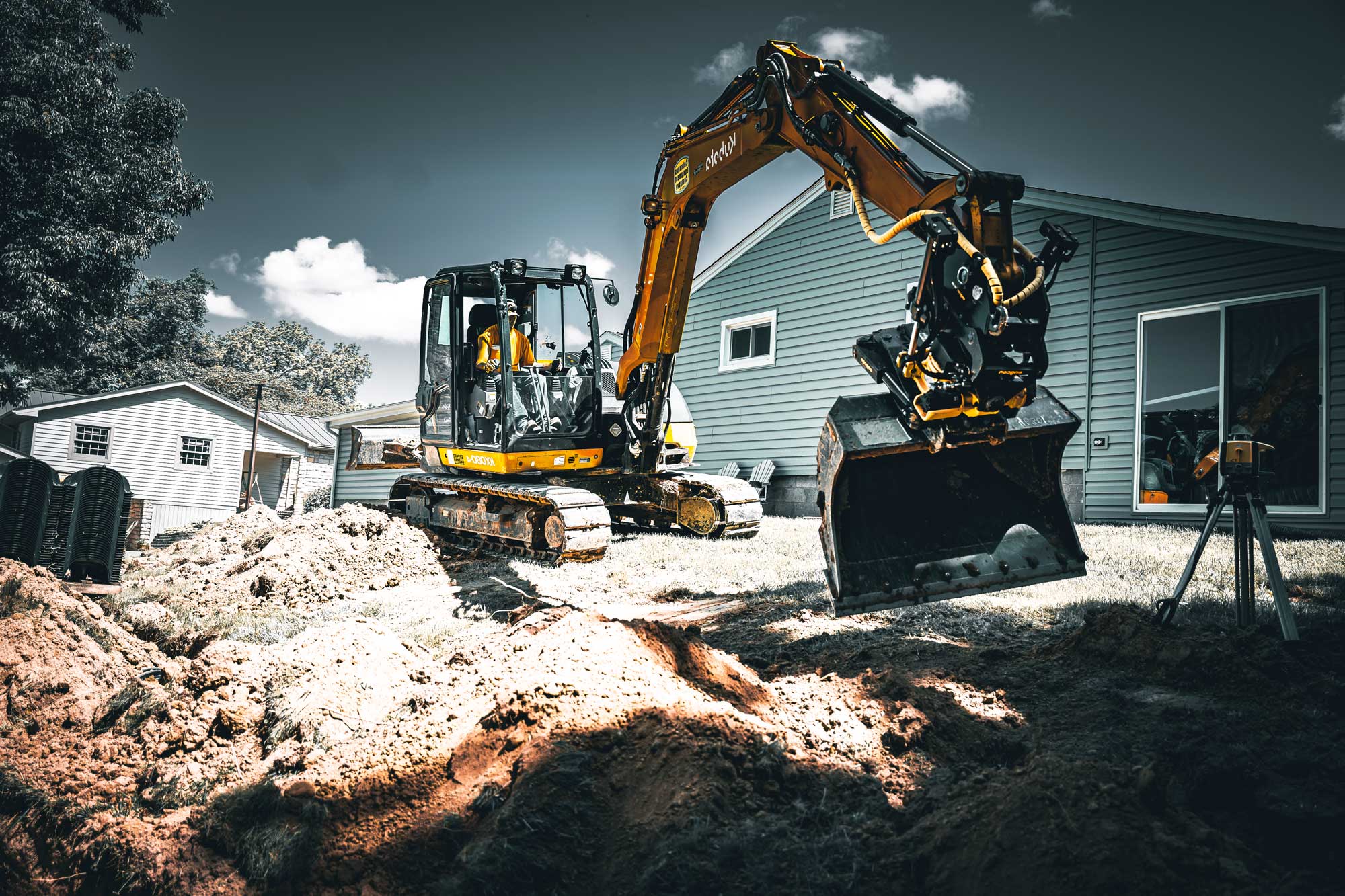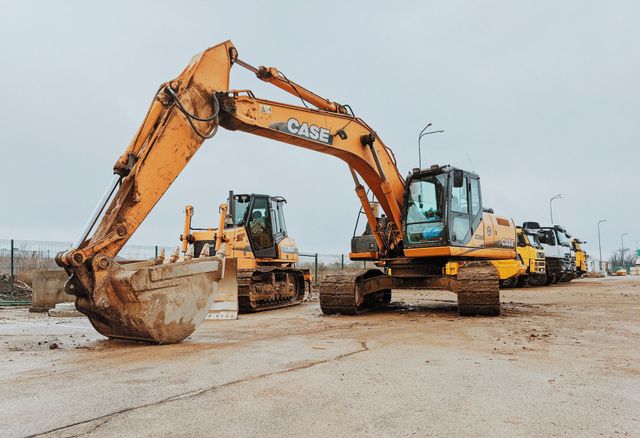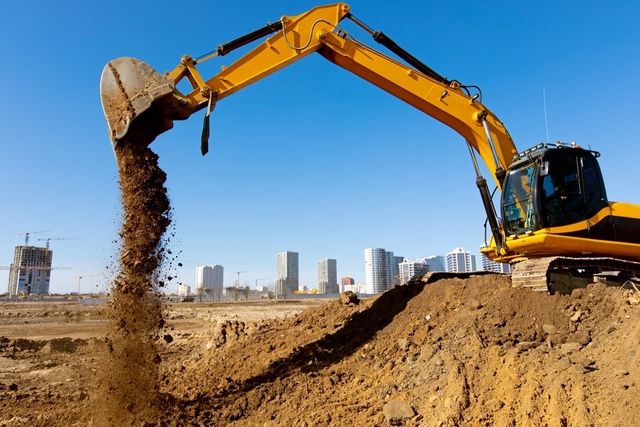Residential Excavating Ohio - Specialized Excavation for Ohio Residences
Residential Excavating Ohio - Specialized Excavation for Ohio Residences
Blog Article
Revealing the Art of Excavation: Pro Tips for Safe and Efficient Digging
As soil is turned and earth is moved, the ins and outs of excavation expose themselves, demanding a keen understanding of equipment, dirt structure, safety and security methods, and ecological factors to consider. The know-how required to browse these aspects effectively can suggest the difference in between a successful excavation job and a potential catastrophe.
Importance of Appropriate Tools
To make sure the safety and security and performance of any excavation project, utilizing the proper tools is critical. Excavation jobs vary in range and complexity, ranging from little property landscape design tasks to massive building and construction tasks.
Excavators are fundamental items of equipment in any kind of digging procedure. These versatile machines come in various dimensions to match various job needs. Miniature excavators are ideal for smaller tasks, while bigger excavators take on more substantial projects effectively. Backhoes are one more essential devices kind, combining the functions of a loader and an excavator in one device. They are important for jobs calling for flexibility and maneuverability.
Bulldozers stand out in jobs that require pushing huge quantities of soil or particles. By spending in the suitable devices, excavation tasks can be completed safely, on time, and with accuracy.
Understanding Soil Structure
A comprehensive grasp of dirt make-up is fundamental for carrying out excavation projects with accuracy and safety and security. Understanding the various kinds of dirt is important as it straight impacts excavation techniques, devices option, and overall project effectiveness. Dirt composition usually is composed of 4 major components: sand, silt, clay, and raw material. Each element has special residential properties that affect just how dirt responds to excavation processes.
Sand particles are the largest and offer good drainage but offer little communication. Silt fragments are smaller sized than sand however larger than clay, providing moderate water drainage and communication. Clay bits are the smallest and give high cohesion however inadequate drain. Raw material, such as decaying plant product, impacts soil fertility and stability.
Before starting excavation, performing soil examinations to identify its composition and qualities is important. This information aids in choosing the appropriate tools, applying safety and security actions, and creating excavation strategies customized to the details dirt conditions - septic ohio. By recognizing dirt composition, excavation professionals can boost job end results while making certain safety and security and adherence to best techniques
Precaution and Procedures
Understanding dirt make-up is the cornerstone upon which safety and security steps and protocols for excavation tasks are developed, ensuring the wellness of workers and the success of the venture. When it involves security throughout excavation, there are several vital steps that need to be implemented to reduce threats and prevent mishaps.
Most importantly, prior to any kind of excavating commences, a detailed evaluation of the site need to be performed to identify any potential dangers such as below ground energies, unstable soil conditions, or close-by structures that could position a risk. It is vital to have an experienced person oversee the excavation process to ensure that all Our site safety protocols are followed strictly.
Additionally, all employees associated with the excavation should be appropriately educated in safe digging methods and the appropriate procedure of equipment. Personal protective devices (PPE) such as tough hats, high presence clothes, gloves, and security boots need to be worn at all times to reduce the danger of injuries. lancaster excavation. Regular safety meetings and toolbox talks ought to likewise be performed to maintain all employees informed about potential risks and strengthen safe work methods. By sticking to these precaution and protocols, excavation projects can be completed effectively and without occurrence.
Effective Excavation Planning
When getting started on an excavation task, careful planning is important to guarantee efficiency, safety, and effective results. Effective excavation preparation includes several key actions that are vital for the smooth implementation of the project. The primary step is to carry out a detailed website evaluation to identify any kind of prospective risks, such as underground energies or unpredictable dirt conditions. This details is important for developing a thorough excavation strategy that includes precaution and risk reduction techniques.
As soon as the website assessment is full, the next step is to create a clear timeline and timetable for the excavation activities. This includes determining the series of tasks, tools demands, and manpower appropriation. Proper organizing helps stay clear of hold-ups and makes certain that the task remains on track.

Moreover, interaction among all employee is vital during the preparation stage. Clear directives, routine updates, and efficient control are important for a successful excavation project. By investing effort and time in precise planning, excavation teams can substantially improve efficiency, reduce dangers, and attain effective end results.

Handling Environmental Factors To Consider
With boosting emphasis on ecological sustainability in building techniques, handling environmental factors to consider has become a crucial aspect of excavation tasks. Excavation activities have the potential to affect the surrounding environment with soil disintegration, sediment drainage, habitat disturbance, and contamination of water resources. To mitigate these risks, it is necessary to carry out best techniques that prioritize environmental management.

In addition, correct waste management is crucial to prevent soil and water contamination. Implementing procedures for the disposal of dangerous materials, recycling of waste materials, and lessening the use of hazardous chemicals can substantially lower the ecological influence of excavation tasks. By incorporating these techniques into excavation planning and execution, construction business can ensure that their jobs are not only risk-free and productive but additionally ecologically responsible.
Final Thought
To conclude, grasping the art of excavation requires a comprehensive understanding of proper tools, soil composition, safety and security procedures, and effective preparation. By complying with these guidelines and considering ecological elements, excavations can be performed securely and efficiently. It is critical to prioritize safety and efficiency in every excavating job to ensure effective outcomes.
As dirt is transformed and earth is relocated, the ins and outs of excavation reveal themselves, requiring a keen understanding of devices, soil make-up, safety methods, and environmental considerations.To make sure the safety and performance of any excavation task, utilizing the ideal tools is extremely important.An extensive grasp of dirt structure is fundamental for implementing excavation jobs with accuracy and security. Understanding the different kinds of soil is you can look here essential as it directly influences excavation methods, devices selection, and total job efficiency. By recognizing soil make-up, excavation experts can enhance job outcomes while making certain security and adherence to ideal methods.
Report this page